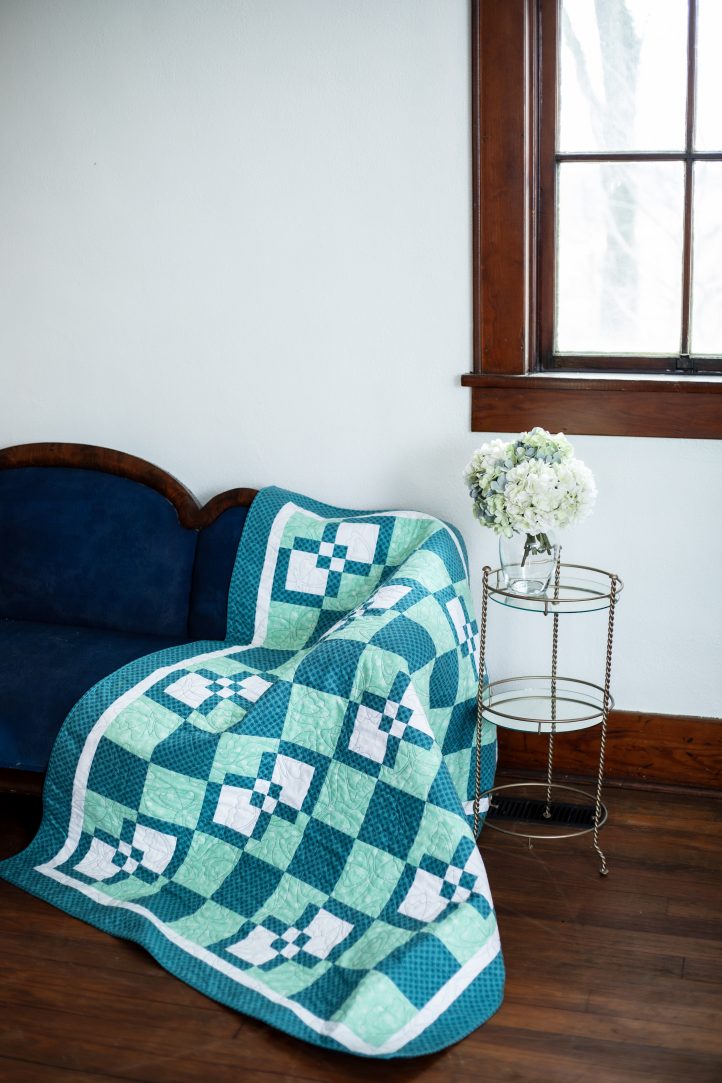
Butterflies have long been a symbol of spring and the Butterfly Chain Spring Quilt Pattern from Brenda Plaster is perfect for welcoming springtime. Finishing at 48 1/2” x 58 1/2”, this spring throw quilt pattern is a mix of traditional four patches and more intricately pieced blocks, so it’s a great pattern for expanding your skillset. This beautiful quilt would look stunning in your home in spring shades like duck egg blue, mint or lavender.
Finished Size: 48 1/2″ x 58 1/2″
Pattern Description:
- Twenty 10” blocks set 4 across and 5 down
- 1-1/4” and 2-3/4” borders
Designer Note: Please read pattern before starting your project.
ADDITIONAL COLORWAYS:
The designer has provided fabric information for the sample shown, as well as additional colorways as inspiration for our readers!
Kimberbell Basics by Maywood Studio
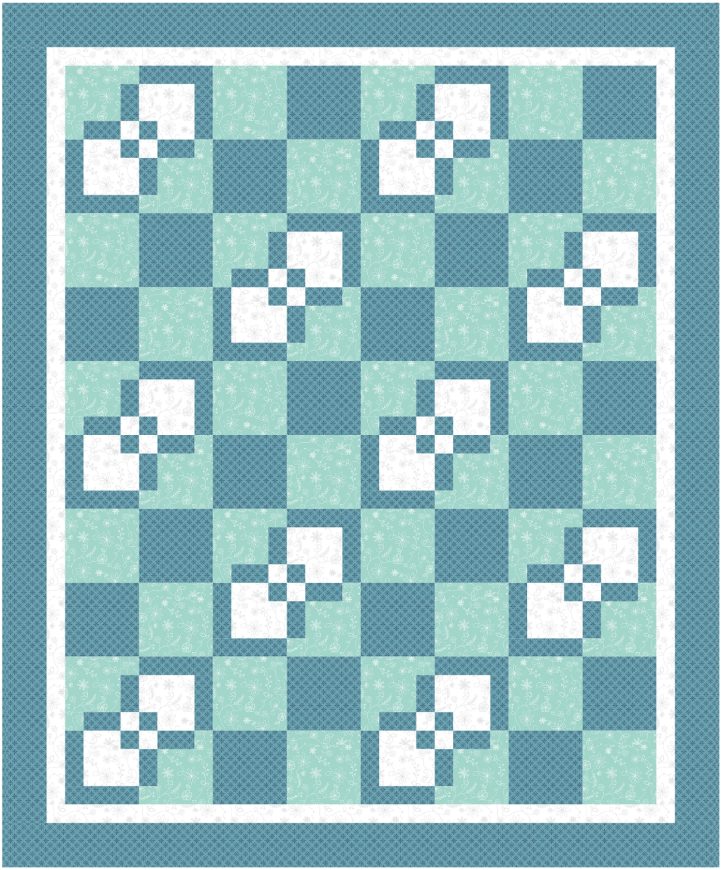
Cowboy Up! By QT Fabrics
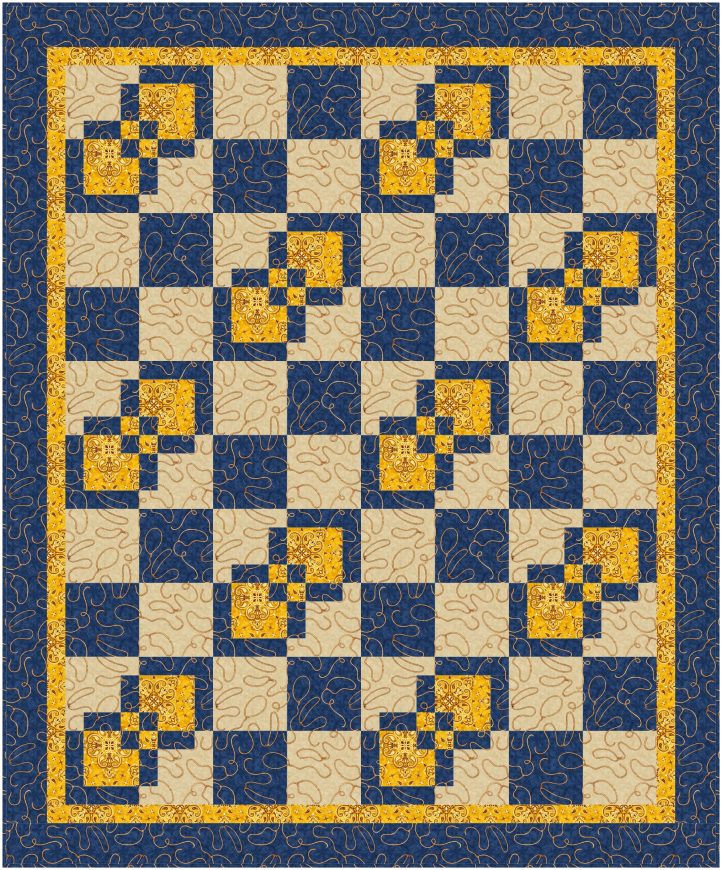
A Pilgrim’s Autumn by QT Fabrics
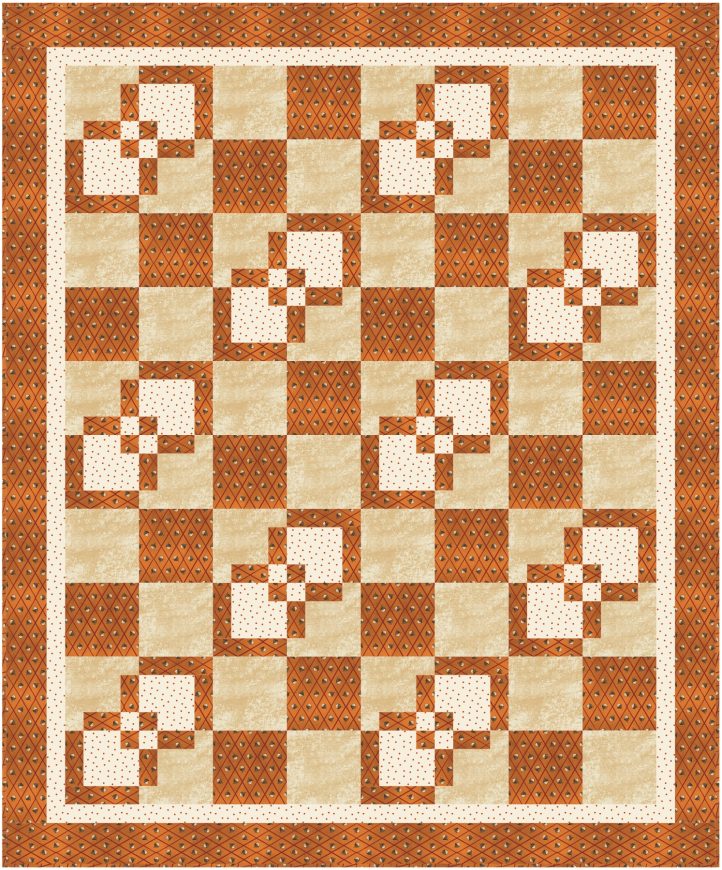
Laurel Burch Basics by Clothworks
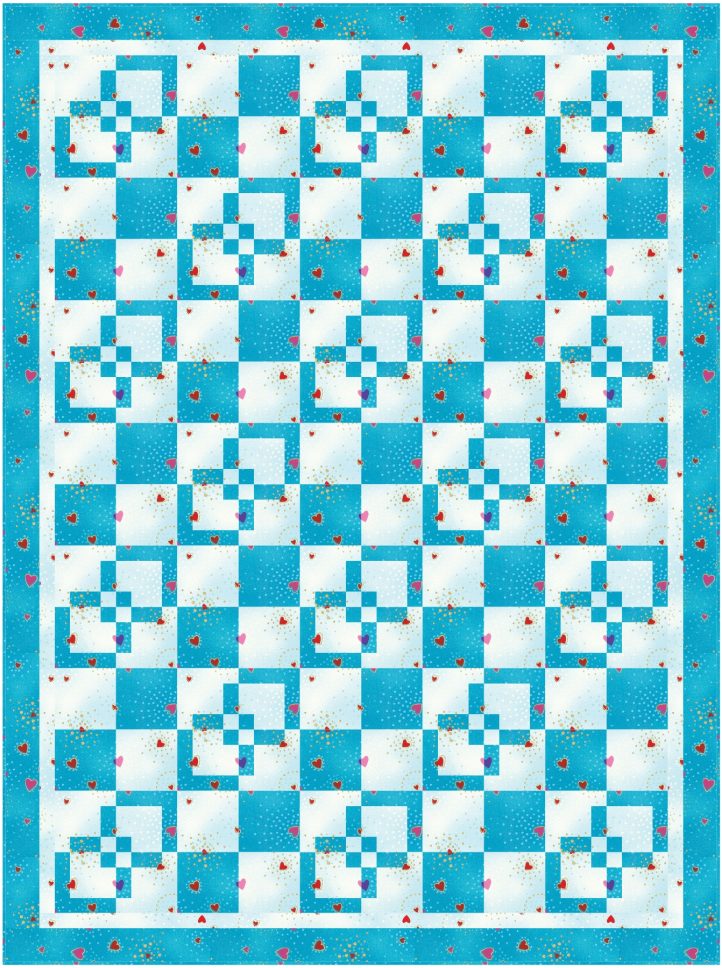
PATCH SUMMARY:
Note: Do not cut from this summary; see Fabric Requirements and Cuts. Patch descriptions refer to fabric sizes/shapes used to construct patches, not the finished fabric sizes/shapes.
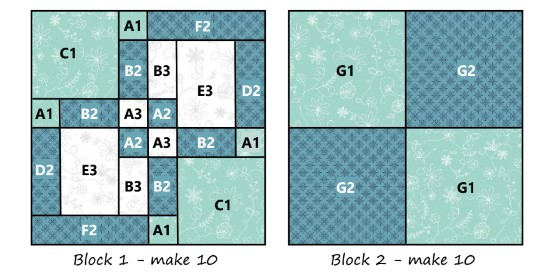
A: 1-3/4” square: 40 A1, 20 A2, 20 A3
B: 3” x 1-3/4” rectangle: 40 B2, 20 B3
C: 4-1/4” square: 20 C1
D: 1-3/4” x 4-1/4” rectangle: 20 D2
E: 3” x 4-1/4” rectangle: 20 E3
F: 1-3/4” x 5-1/2” rectangle: 20 F2
G: 5-1/2” square: 20 G1, 20 G2
Fabric estimates are based on useable fabric width (selvage to selvage) of at least 42”. Add yardage if you prewash your fabrics or are fussy-cutting.
Most fabric cuts are across width of fabric (WOF). Some Fabric 2 cuts are lengthwise (parallel to selvage) to enable lengthwise cuts of the second border; fabric does not stretch on the lengthwise grain, preventing distortion. The first border is cut WOF to save fabric.
In the patch labels (see Patch Summary), the letter refers to the patch. The number refers to the fabric from which it is cut. For example, A1 is an A patch cut from Fabric 1.
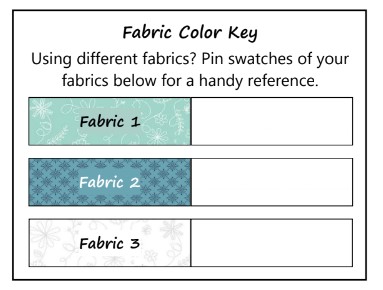
Fabric Requirements and Cuts:
- Fabric 1: 1 yard
- G1: Cut WOF [3] 5-1/2” strips.
- C1: Cut WOF [3] 4-1/4” strips (2 strips may be enough if fabric is wider than 42”). From these, cut [20] 4-1/4” x 4-1/4” squares.
- A1: Cut WOF [2] 1-3/4” strips.
- Fabric 2: 2-1/8 yards
- G2: Cut WOF [3] 5-1/2” strips.
- B2: Cut WOF [2] 3” strips.
- F2: Cut WOF [3] 1-3/4” strips. From these, cut [20] 1-3/4” x 5-1/2” F2 rectangles.
- D2 and A2: Cut WOF [4] 1-3/4” strips (3 strips may be enough if fabric is wider than 42”).
- From remaining fabric, cut:
- Second border: Cut lengthwise of fabric [6] 3-1/4” strips if sewing straight border seams, 7 if sewing bias border seams.
- Binding: From remaining fabric, cut enough 2-1/4” or 2-1/2” strips (your preference) to join and make about 213” binding.
- Fabric 3: 3/4 yard
- E3 and B3: Cut WOF [4] 3” strips (3 strips may be enough if fabric is wider than 42”).
- First border and A3: Cut WOF [6] 1-3/4” strips.
- Backing: 3-1/4 yards
- Backing 4” larger on all sides than the top is recommended for longarm quilting. Cut fabric into two equal lengths, join to make a 58-1/2” x 83-1/2” backing (length will be more if fabric is more than 42” wide). Remove selvage from seam to prevent puckering.
Instructions:
All seams are 1/4”. Press seams in direction of arrows in illustrations or per instructions. There’s also the option of pressing seams open.
- Join fabric strips as shown. Sew 2 strip sets. Cut across 1 strip set at 1-3/4” intervals to make 20 A1/B2 units. To remaining strip set, sew Fabric 3 strip as shown (in second image below). Cut across strip set at 1-3/4” intervals to make 20 A1/B2/A3 units.


- Combine A1/B2 made in Step 1 and C1 as shown to make [20] 4-1/4” x 5-1/2” rectangles. Sew A1/B2/A3 made in Step 1 to units as shown (in second image below) to make [20] 5-1/2” x 5-1/2” squares.
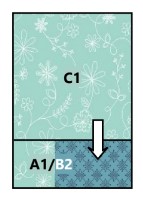
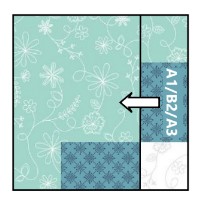
- Join fabric strips as shown. Sew 4 strip sets (3 strip sets may be enough if fabric is wider than 42”). Cut across strip sets at 4-1/4” intervals to make 20 D2/E3 units, then cut across strip sets at 1-3/4” intervals to make 20 A2/B3 units. Join these units as shown (in second image below) to make [20] 5-1/2” x 4-1/4” rectangles. Add F2 as shown (in third image below) to make [20] 5-1/2” x 5-1/2” squares.

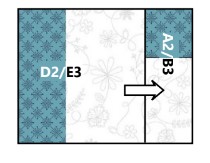
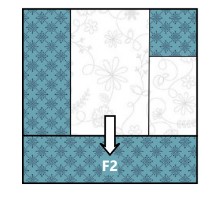
- Join units made in Steps 2 and 3 as shown to make [20] 10-1/2” x 5-1/2” rectangles. Join these units as shown (in the second image below) to complete 10 Block 1 blocks measuring 10-1/2” x 10-1/2”.
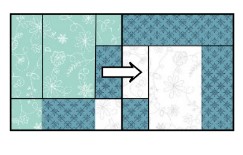
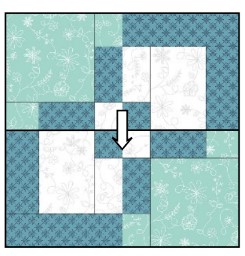
- Join fabric strips as shown. Sew 3 strip sets. Cut across strip sets at 5-1/2” intervals to make 20 G1/G2 units. Combine these units to complete [10] Block 2 blocks measuring 10-1/2” x 10-1/2”.

- Join blocks in 5 rows of 4 blocks each. Press seams toward Block 2. Join rows to complete quilt center. Press seams.

- Joining border strips to make lengths needed:
- Measure through quilt center lengthwise. Cut 2 first border strips to that length. Join border strips to make lengths needed. Sew to quilt sides. Measure through quilt center crosswise. Cut 2 first border strips to that length. Join border strips to make lengths needed. Sew to top and bottom of quilt. Press seams toward border. Add second border in the same way.
- Layer top, batting and backing. Quilt as desired. Bind quilt with Fabric 2 binding strip.
This pattern was tested by Sheila Ciechoski. Thank you!

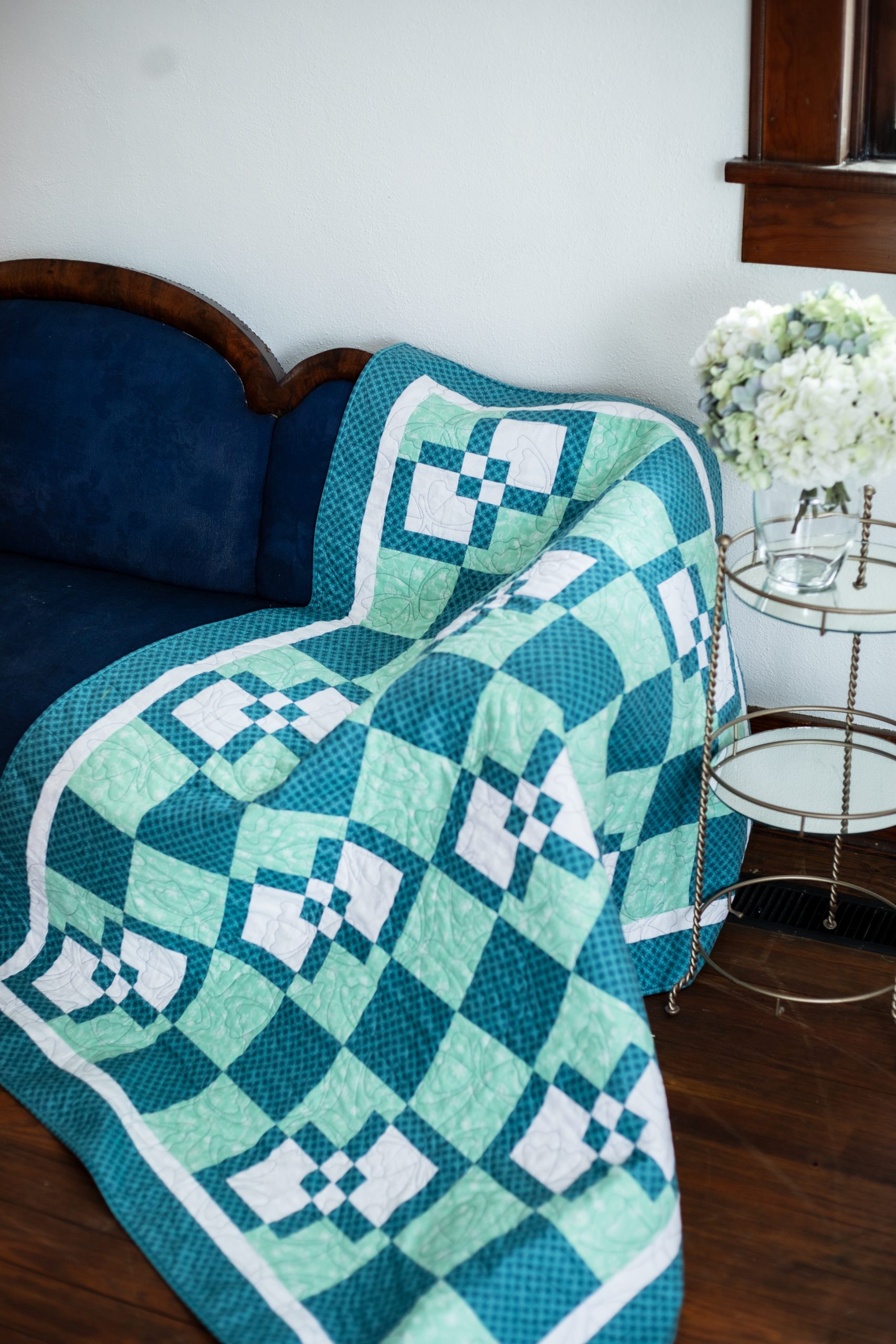
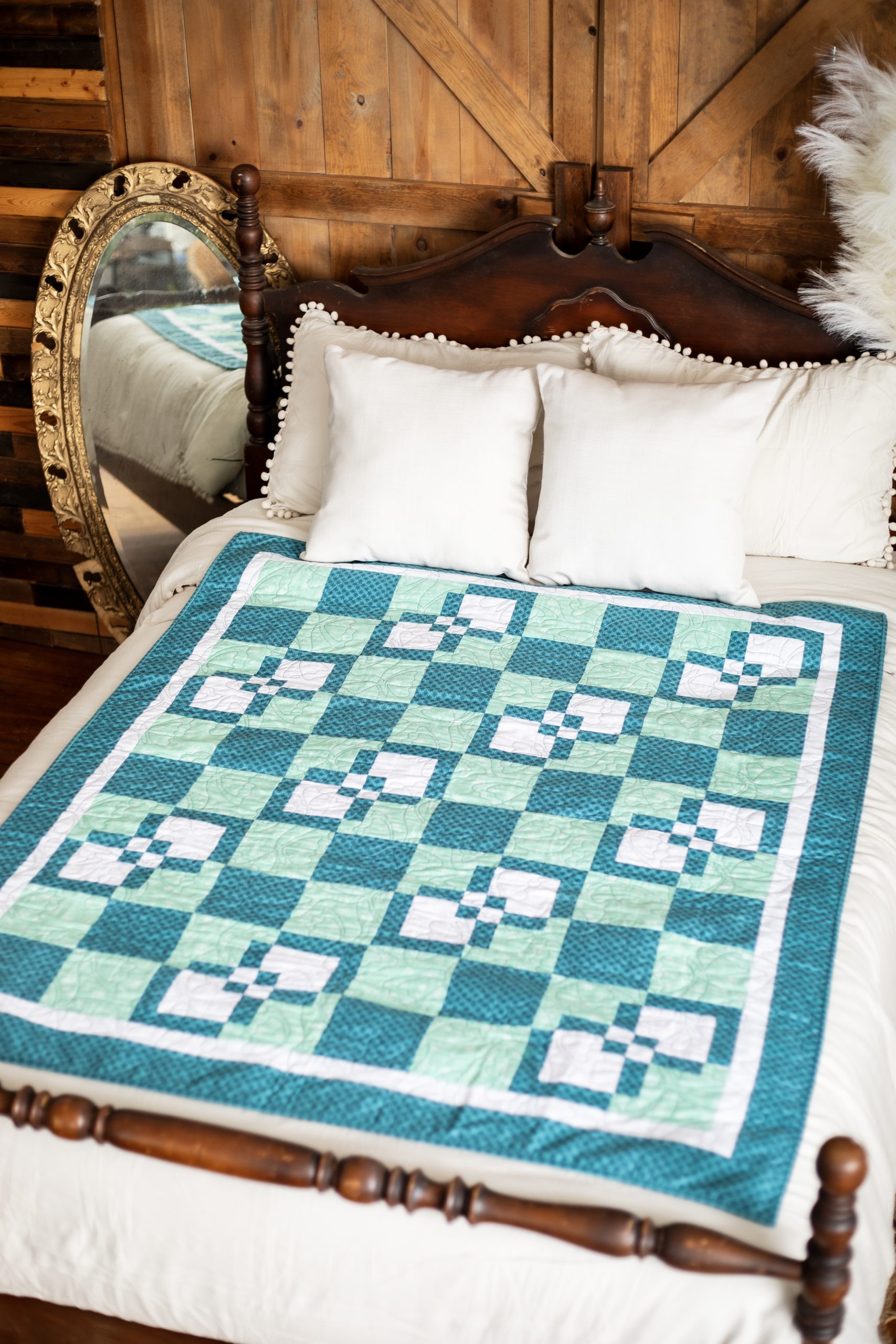
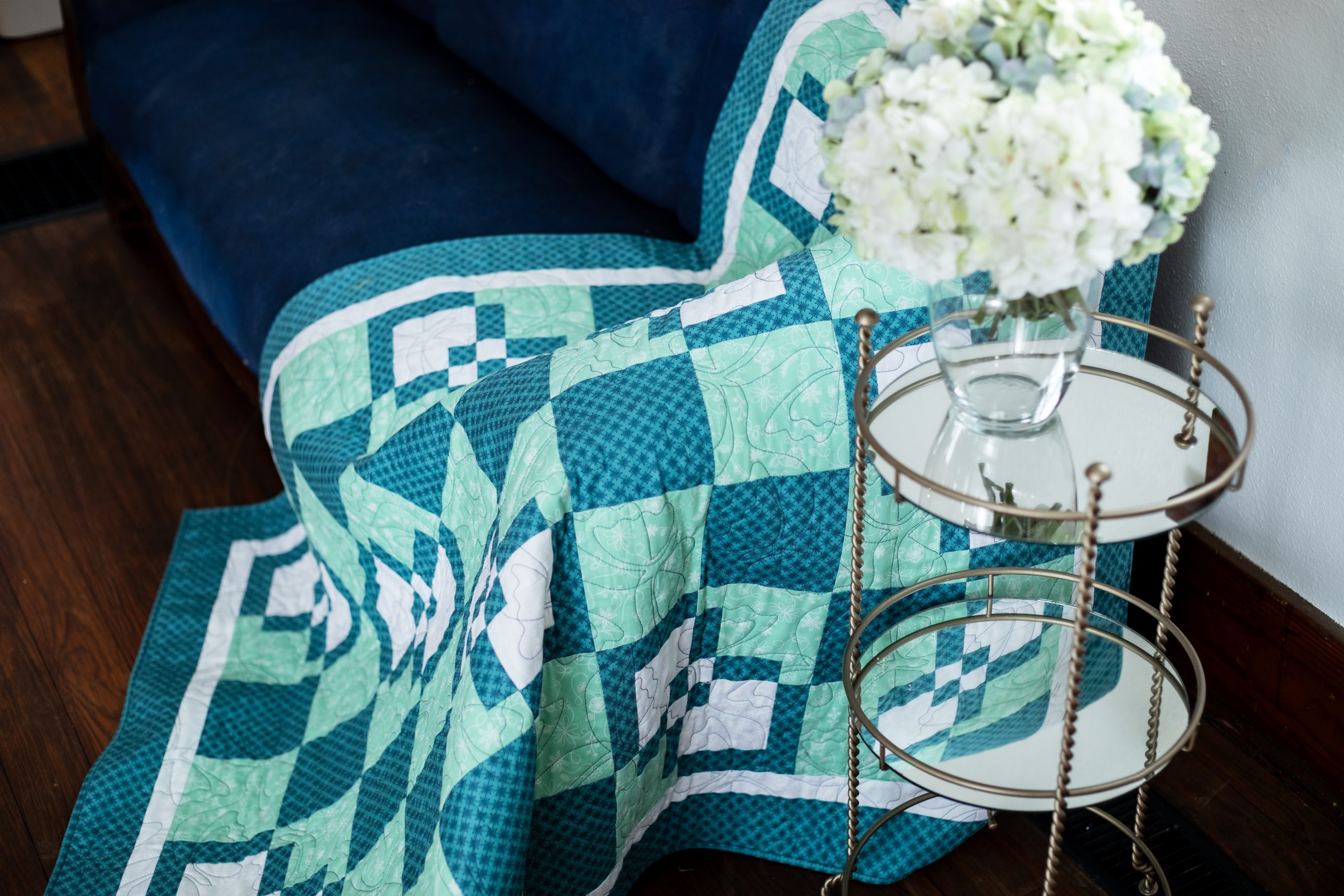
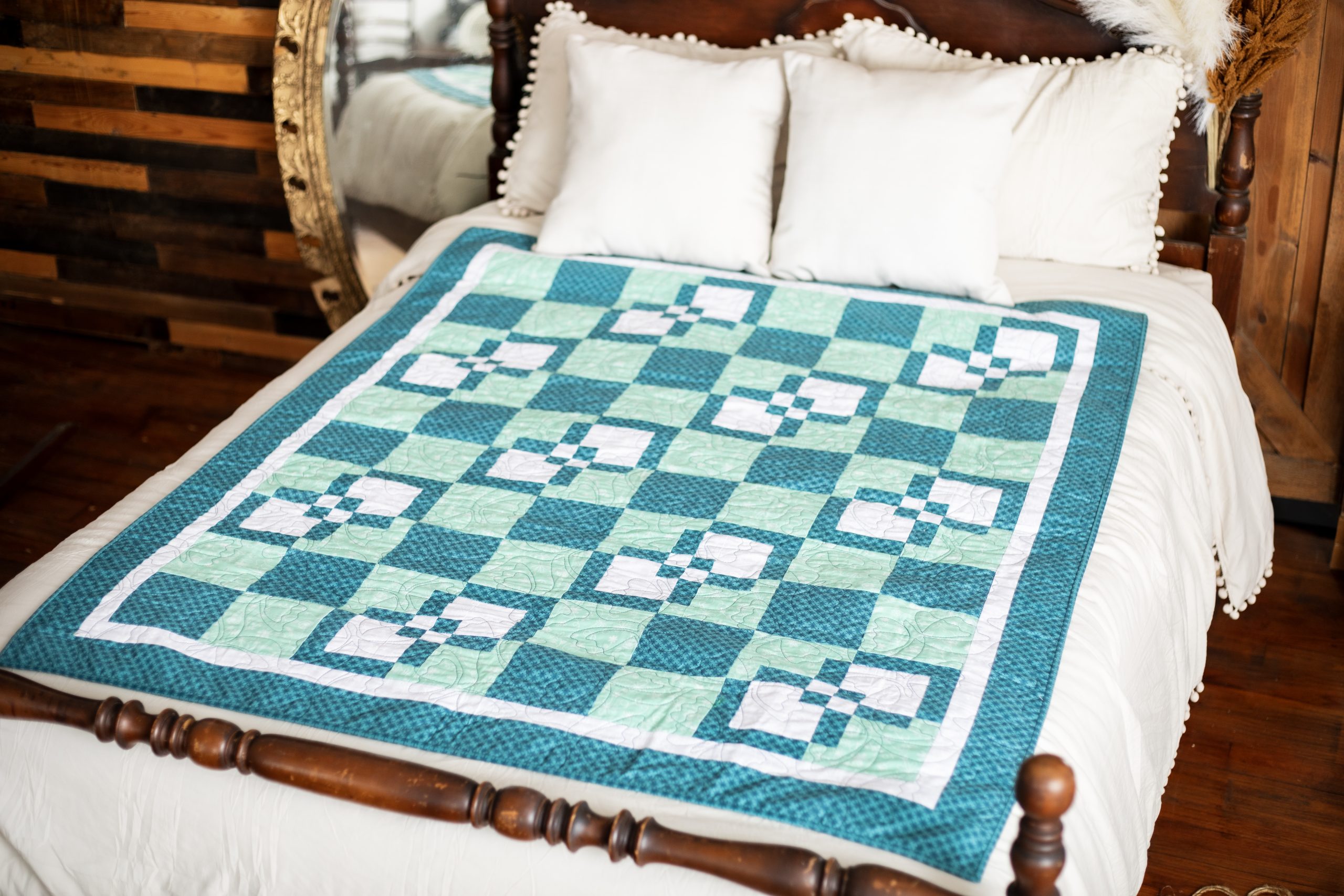
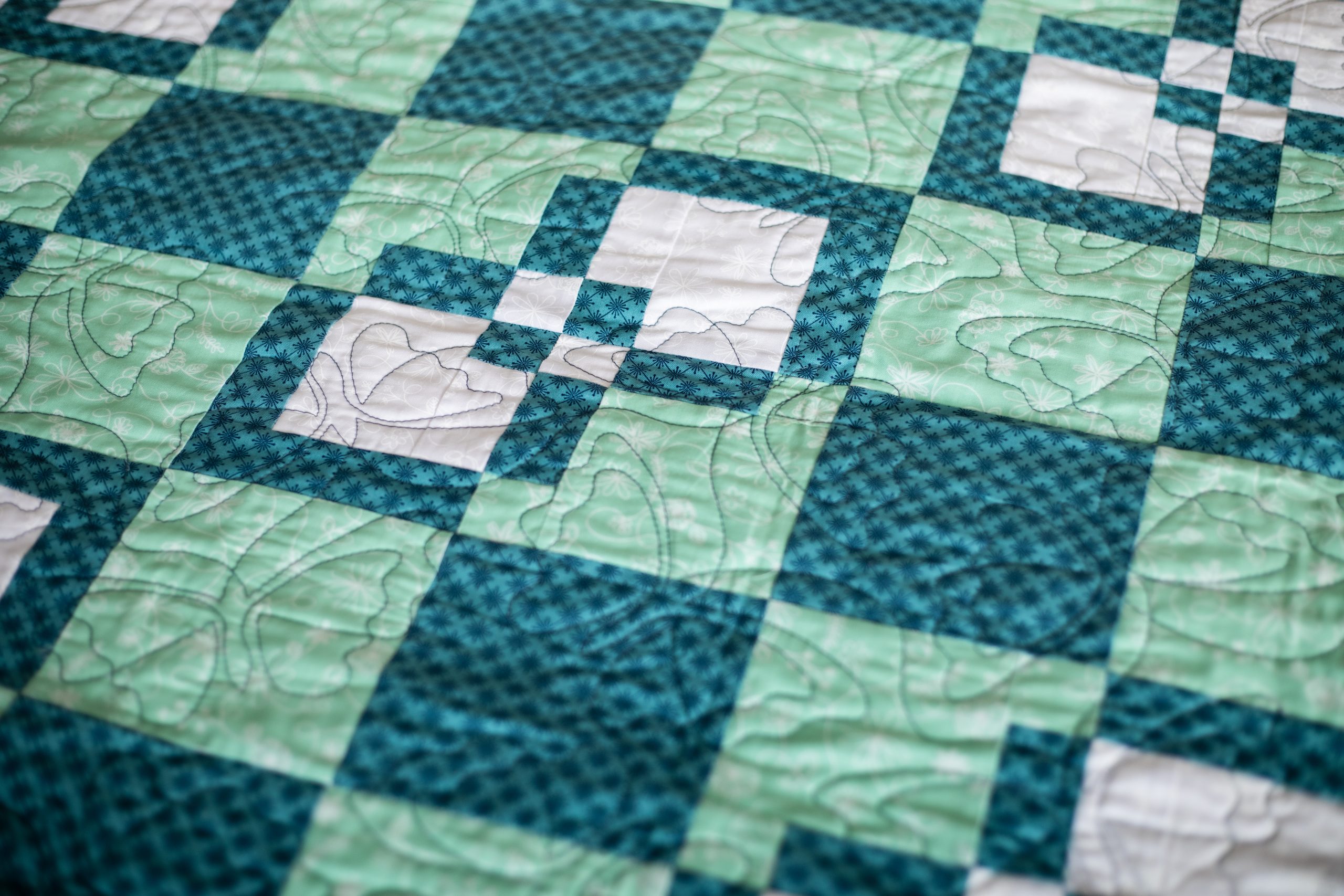
You have A1 and A2 as the same fabric at the very top of the pattern and then is two different colors in the instructions.
I sure hope they answer you as the last answer was a year ago.
Hi Amy! Would you be able to provide further clarification on where you are seeing A1 and A2 as the same fabric? Then we can reach out to the designer for clarification if needed. Thank you! – Ashley, We Like Quilting
Are there instructions/fabric requirements for a queen-size quilt?
Hi Connie! The designer has provided instructions for 48 1/2″ x 58 1/2″ only. Have a great day! – Ashley, We Like Quilting
Hi again, Connie! The designer attempted to contact you regarding your question via email. Please check your spam/promotions folder. Thanks so much! – Ashley, We Like Quilting